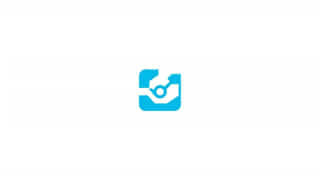Cyan is a striking and vibrant color that sits between blue and green on the color spectrum. It is often described as a fresh, modern hue that evokes clarity, cleanliness, and energy. In digital design, cyan is a fundamental part of the RGB and CMYK color systems. It is commonly used in everything from website interfaces to brand visuals, thanks to its strong visual appeal and versatility. Understanding the color code for cyan, including how it appears in different formats like hex, RGB, CMYK, and HSL, is essential for graphic designers, developers, and artists aiming for consistency and professionalism in their work.
What Is Cyan?
Defining Cyan
Cyan is a secondary color created by mixing green and blue light. It is one of the primary colors in the subtractive CMYK color model, used in printing. In the additive RGB color model, cyan is created by combining equal parts of green and blue light. The result is a vivid hue that is often associated with water, sky, technology, and freshness.
Visual Characteristics of Cyan
Cyan is considered a cool color and can vary in shade from light and soft to bold and electric. It is often described as:
- Bright and clean
- Energetic and dynamic
- Modern and futuristic
- Refreshing and calming
This versatility makes cyan a popular choice in design, fashion, branding, and digital media.
Cyan in Digital Formats
Hex Code for Cyan
The most commonly used color code for cyan in web design is the hexadecimal format. The standard hex code for pure cyan is:
- #00FFFF
This code represents a full amount of green and blue, with no red. The format follows#RRGGBB, where each pair of characters stands for the red, green, and blue values in hexadecimal notation.
RGB Code for Cyan
In the RGB color model, cyan is represented by the following values:
- RGB(0, 255, 255)
This means there is 0 red, 255 green, and 255 blue. These are the maximum values for green and blue, resulting in a bright cyan shade.
CMYK Code for Cyan
The CMYK model is used for print and subtractive color mixing. In CMYK, cyan is one of the primary colors. Pure cyan in CMYK is defined as:
- CMYK(100%, 0%, 0%, 0%)
This means cyan is at full strength, with no magenta, yellow, or black added.
HSL Code for Cyan
Another way to describe color is through the HSL model, which stands for hue, saturation, and lightness. The HSL code for cyan is:
- HSL(180, 100%, 50%)
This shows that cyan is located at 180 degrees on the color wheel, is fully saturated, and has medium lightness. This is a helpful way to understand how cyan fits within the broader spectrum of hues.
Shades and Tints of Cyan
Light and Dark Variations
Like most colors, cyan can be altered by adjusting its brightness or mixing it with other hues. Some common variations include:
- Light Cyan: #E0FFFF, a soft pastel shade
- Dark Cyan: #008B8B, a deeper, cooler version
- Sky Blue: #87CEEB, often considered a soft cyan-related hue
These variations are useful for creating depth, contrast, or different moods within a design.
Complementary and Analogous Colors
To make the most of cyan in design, it helps to understand which colors pair well with it:
- Complementary Color: Red (#FF0000), which sits opposite cyan on the color wheel
- Analogous Colors: Blue (#0000FF) and Green (#00FF00), which sit next to cyan on the spectrum
- Triadic Colors: Magenta and yellow, forming a balanced trio with cyan
These relationships are crucial when creating harmonious color palettes for branding, websites, or digital products.
Use of Cyan in Design and Branding
Why Designers Choose Cyan
Cyan is often chosen for its clean and modern look. It evokes feelings of freshness and clarity. Its association with water and air makes it ideal for companies in the health, technology, and environmental industries. Designers appreciate cyan for:
- High visibility on both dark and light backgrounds
- Its ability to stand out without overwhelming
- Its calming yet vibrant presence
Common Industries That Use Cyan
Some industries and applications where cyan is popular include:
- Technology: Often used in logos and user interfaces for its clean, futuristic feel
- Healthcare: Suggests cleanliness, precision, and trust
- Finance: Seen as stable and modern
- Travel and lifestyle: Reflects the colors of the sea and sky, promoting relaxation
Cyan in Printing vs. Digital
Differences in Display
One of the challenges with using cyan is the difference between how it appears on screen versus how it prints. Digital screens use RGB light to display colors, while printers use CMYK ink. Cyan in RGB is created using light, while cyan in CMYK is created with pigment.
This can cause slight variations in color appearance, especially in gradients or images that require subtle color blending. To avoid issues:
- Always use the correct color profile (RGB for web, CMYK for print)
- Check color proofing settings in your design software
- Print test samples before large-scale production
Color Management Tips
Accurate color management is crucial when using cyan across digital and print formats. Make sure to:
- Use calibrated monitors
- Embed color profiles in your design files
- Match Pantone colors when consistency is essential
This ensures that your cyan appears the same in every medium, maintaining brand consistency and design integrity.
Cyan is a bold and flexible color that plays a central role in both the RGB and CMYK systems. From its vibrant appearance on screens to its essential function in print, cyan is a go-to color for designers who want to evoke energy, clarity, and innovation. Its official hex code#00FFFF, along with its RGB, CMYK, and HSL equivalents, makes it easy to implement across platforms. Whether you’re building a modern website, designing a logo, or preparing marketing materials, knowing the color code for cyan ensures that you can work with this eye-catching hue confidently and consistently.
